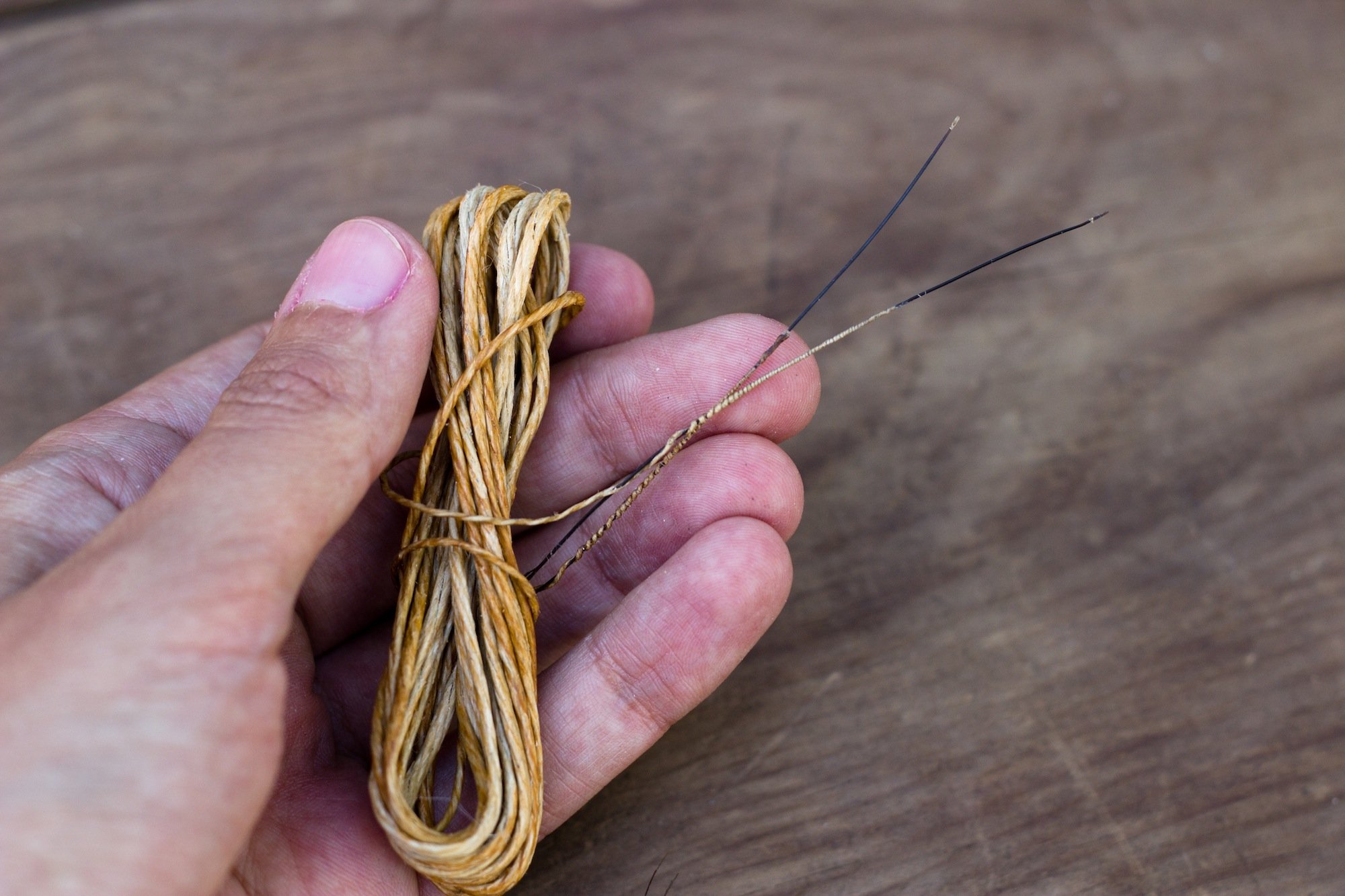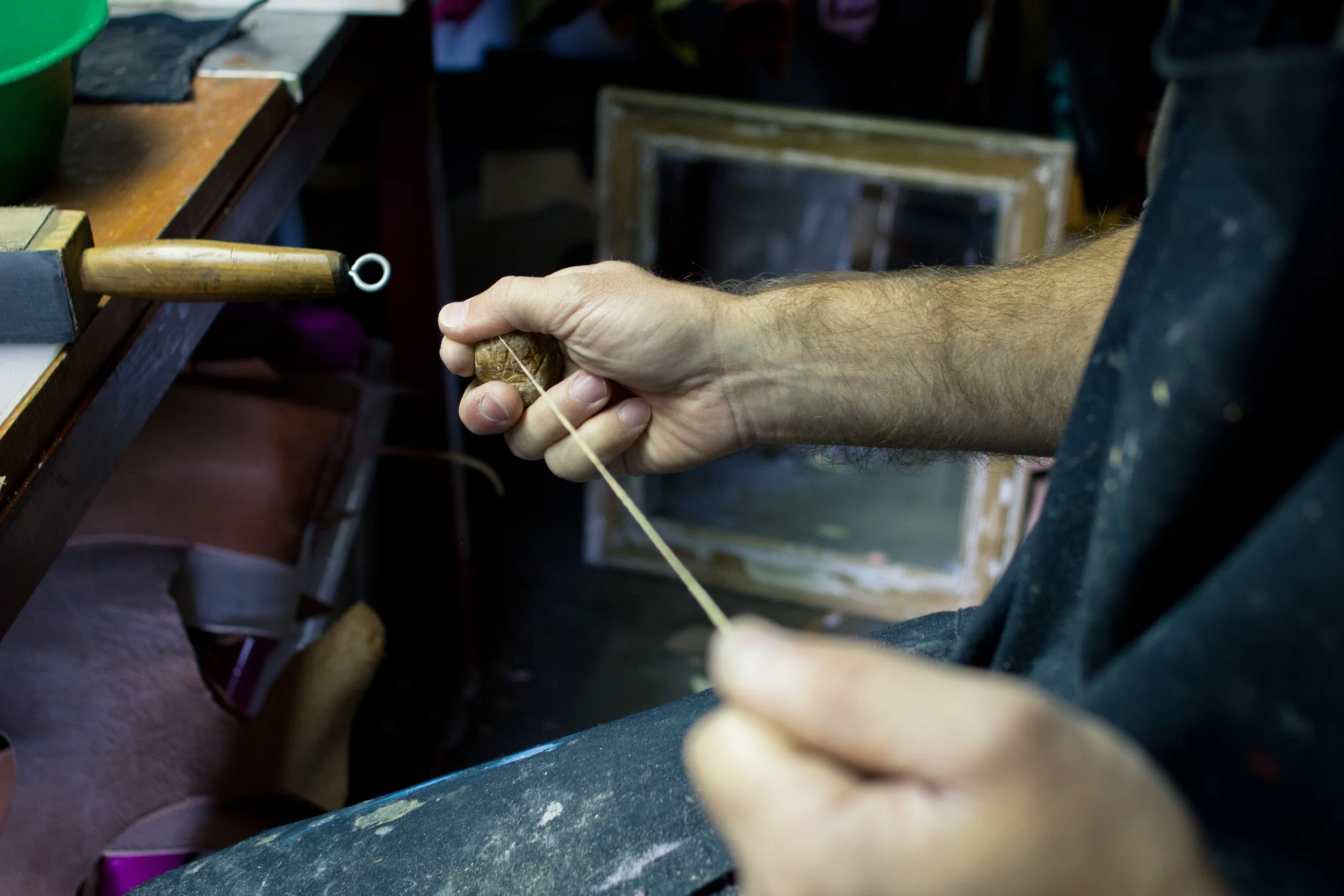Making Thread from Boar Bristles
When I first visited him, José Machado showed me the basics of a technique I found interesting: making a hemp sewing thread from scratch with two boar bristles tips traditionaly used to sew shoes or other leather goods. For someone used to associate sewing with metal needles, the boar bristle a novelty. Actually, it’s an excellent needle to use in a stiff material like leather, because it’s as hard as it is flexible, which makes it perfect for those 90º turns, without causing too much friction with the leather.
In the video, Zé explains how this thread is done, step-by-step.
MATERIALS AND TOOLS:
- hemp thread
- beeswax mixed with pitch
- two boar bristles
- awl
STEP BY STEP
1. Fraying the first strand
To allow the bristles to be tied to the thread without forming knots that prevent them from going into the hole, each thread must be frayed so that, at the end, there is no more than a single hemp fiber. To do so, the thread is scraped off continually between the palm and the leg. The fibres that break off are frayed.
2. Adding the remaining strands
The endurance of the sewing thread depends on how many strands it has. In this case, the sewing thread will have 4 strands that will be added one by one, each one of those being shredded every single time, so that the end of the sewing thread stays sharp and with a single fibre on its tip. To make sure of it, each strand is placed 5 cm shorter on each end, so that the thickness of the thread will increase from the tip inward.
3. Plying the thread
After adding the 4 strands that will form the sewing thread, you have to twist them so that they become strong enough. To do so, you start by one of the ends and wind the sewing thread on your thumb and, when you finish, you unwind it. This motion will create a spiral effect that will ply the 4 strands, and, in this case, should be repeated at least 6 times.
4. Finishing the end
When the sewing thread is plyed, it is necessary to finish the two ends so that they will not start to unwind. By repeating that motion of twisting the thread between the palm and the leg, the end of the thread is rolled once anti-torsion-wise, as if it is being unwind, and then several times torsion-wise, using saliva to keep it damp. This unwinding procedure may seem contrary to our intentions, but it is this motion that gives the thread tip more strength so that it will remain winded in the right direction.
5. Waxing
When the sewing thread is completely plied, we now wax it with a mixture of beeswax and pitch.
6. Attaching the boar bristles
Picking the single fibre that was left on the end of the thread, we start to wind it from the root of the bristle up to circa 2 cm - the root of the bristle will work as the tip of the needle. Then it will be winded back (towards the root) and, lastly, winded to the front again, but tightly, so that you almost cannot see the bristle under the thread. Finishing this stage of winding the thread onto the bristle, you use the awl to punch a hole just about in the middle of where the root of the boar bristle will go, tying a small knot that secures the bristle.
(English translation by Nuno Miranda Ribeiro)







